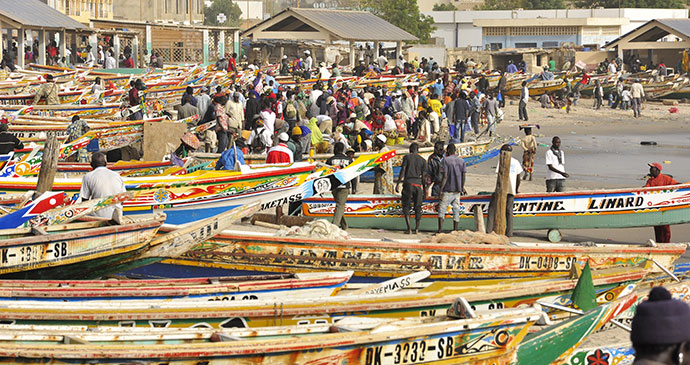
Frenetic, fashionable and freewheeling, Dakar has something for everyone: shop, swim, stroll, and surf, or drink, dance and dine.
A blast of humidity, a statue on a hill, and something sweet in the air. Arriving in Dakar is a thrill for the senses, and the city practically swims in ocean humidity, swaddling your aeroplane-desiccated body in its warm, pillowy grasp as you breeze into the city from the swish new airport outside of town. The enormous statue slowly enters your line of sight, and an ever-so-faint smell catches you by the nose. Perhaps it’s what acclaimed Polish journalist Ryszard Kapuściński called ‘the scent of the tropics’, the ‘almonds, cloves, dates and cocoa’, the ‘vanilla and laurel leaves, oranges and bananas, cardamom and saffron’ that decorate the air and fight for supremacy with the ever-present fish odours, exhaust fumes and drainpipes of a major coastal city. Or perhaps it’s just thiouraye, the gummy, herbal Senegalese incense burned over hot coals in every home, known equally for its ability to freshen a room after mealtimes as for its supposed seductive qualities.
And Dakar is a master of seduction indeed. A superlative African city in every sense, the dining here is as sophisticated as you’ll get anywhere on the continent and the cultural calendar puts that of larger cities to shame. Drummers pound, singers wail, dancers flail and artists of all stripes brush, hammer, scrape and sew some of the most innovative works in West Africa, cheek-by-jowl with legions of hawkers, beggars and hustlers, and all of these dreamers and schemers crammed on to a tiny, windswept peninsula jutting deep into the Atlantic at the very edge of the continent. It’s impossible to be more than 3km from the water at any given time, and the temperate ocean drafts will have you calling to thank your mother for making you pack a sweater.
The skyline teems with rusting satellite dishes, whirling construction cranes, improbably bent antennae, flamboyant laundry, towering minarets and thousands of seagulls keeping watch over it all. Surfers colonise the peninsula’s periphery, catching waves in the traditional Lebou villages of Ngor and Yoff, while sellers dominate the interior, haggling over sticky cups of attaya in frenetic market passageways from Medina to HLM. And Plateau, the district where all Dakar’s citizens come to rub shoulders, is a dizzying mix of high fashion and urban frenzy, where business suits and boubous jostle for space on the paving stones that more often resemble a geological fault than a reasonable place to walk. The cast of characters here is worthy of any epic; street traders bent double under their wares hawk bracelets and bangles to women in precise coiffures and vertiginous heels; businessmen in skinny neckties and horn-rimmed glasses stare aimlessly into their Smartphones over dripping bites of chawarma; and Lebanese and French expats cruise past in anonymity behind the mirror tints on their 4x4s. All roads in Senegal do in fact lead to Dakar, and they could’ve hardly picked a better destination.